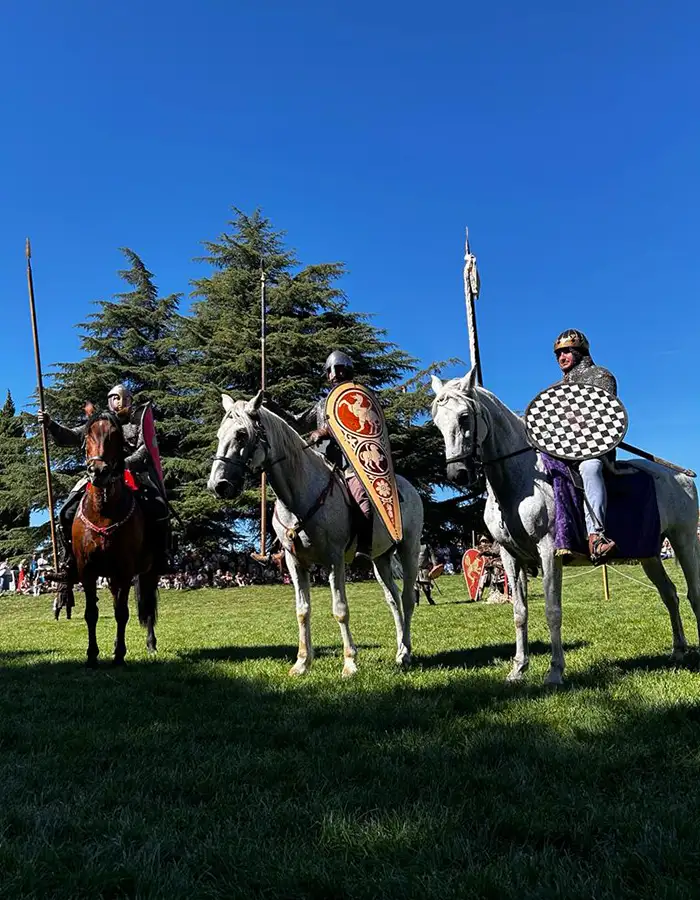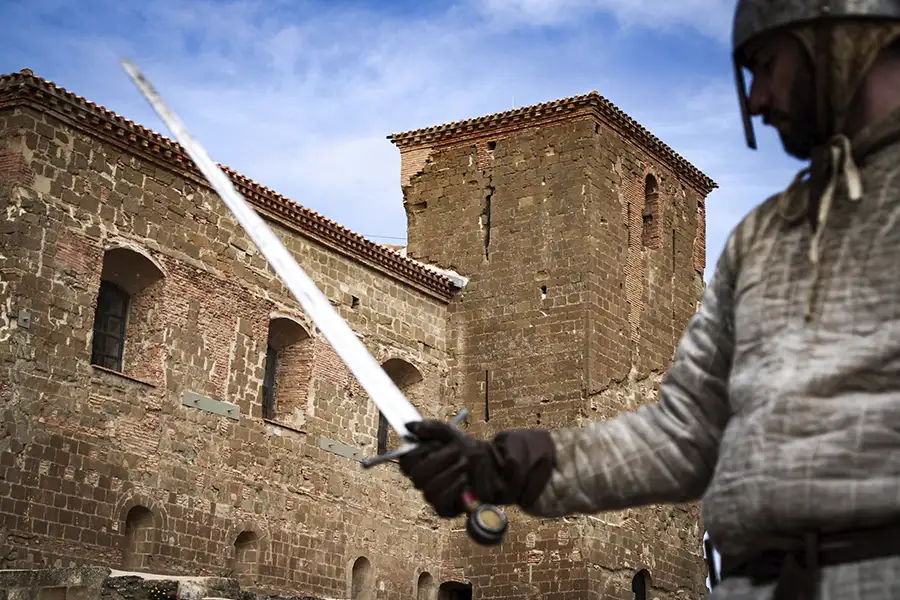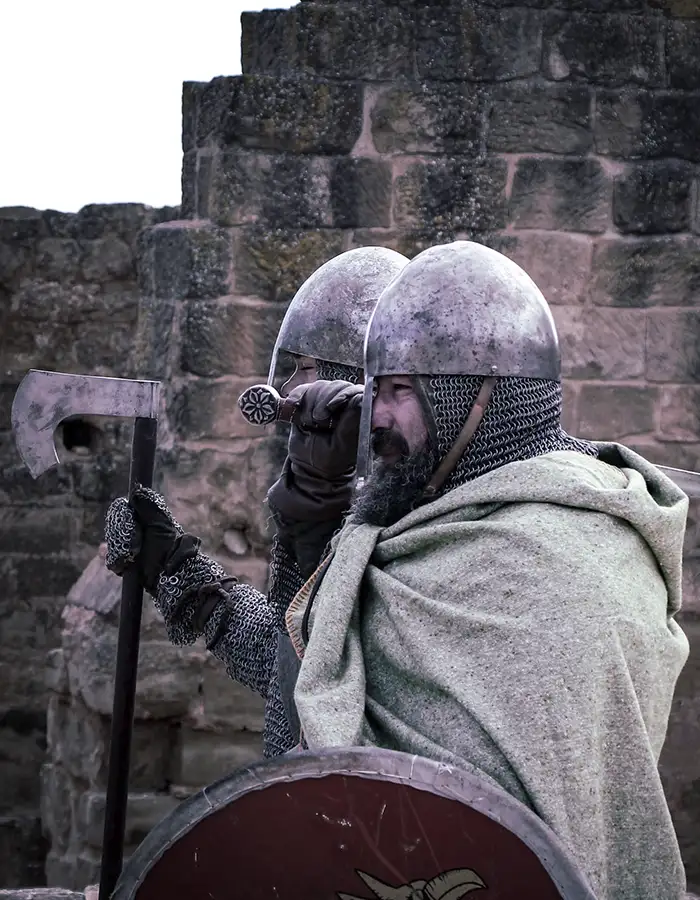The construction of the Kingdom of Aragon
- WHome
- 9Construction of the Kingdom

Construction of the castle
THE BIRTH OF THE FORTRESS
The first issue is to elucidate the birth of the fortress and the monastic habitat. In the absence of archaeological support to confirm certain hypotheses about the first settlements on the hill where Montearagón sits and its different stages of occupation, the first reference to Montearagón appears in three parchments dated in Peña in May 1086. At the beginning of this year, there was a first castrum or walled enclosure with some dependencies on the hill where the castle stands.
The construction of the church would be subsequent to May of that year, as it mentions the “church that we have newly built in honor and in the name of Jesus Nazarene in the castrum that we call Montearagón.” Therefore, this first fortress would have begun in 1085 and been completed in the spring of the following year, housing the best lords of the king.
Creation of the church
BUILDING AND CONSECRATION
Thus, the church of Jesus Nazarene was born without any dependence on the future bishopric of Huesca and under royal patronage. This characteristic would be of vital importance in later dates and is the basis of the confrontations between Montearagón and the bishopric of Huesca.
The building dates back to a period between May 1086 and July 1, 1089, when Pope Urban II took it under his protection.
The consecration would be months later, as recorded in a document from Sancho Ramírez for San Juan de la Peña, dated May 15, 1090. The canonical would be installed later, as well as the tithe of the town, first mentioned in 1098.

VISIT THE CASTLE
Donations
THE SURROUNDINGS OF THE CASTLE AND THE VILLAGE
From all the above, it is clear there was great interest in populating both the castrum and the village of Montearagón from 1089 onwards. Both spaces are different: on the one hand, there is the castrum with its palaces and rooms, and on the other, the village. Similarly, the church of Jesus Nazarene is different from the canonical of Montearagón. The creation of the village did not result from a search for new spaces due to the saturation of the castrum but was a simultaneous action, as there are internal donations subsequent to the grants in the village. This policy corresponds to a clear model of successful military exploitation and pressure, as reflected in the conquest of Huesca, where Montearagón played a fundamental role, just as the construction of El Pueyo would be for the conquest of Barbastro or that of El Castellar and Juslibol for Zaragoza.
The kingdom
KINGS AND CANONS
From then on, and especially in the coming years, the kings always acted generously towards the monastery, allowing it to have large revenues but also laying the foundation for its disputes with the bishopric of Huesca.

